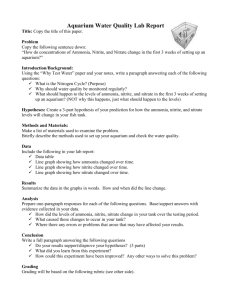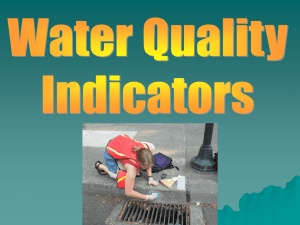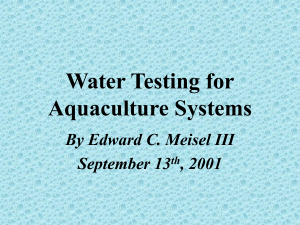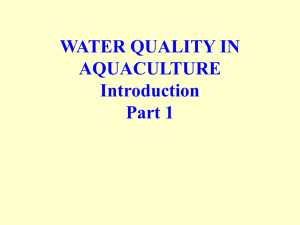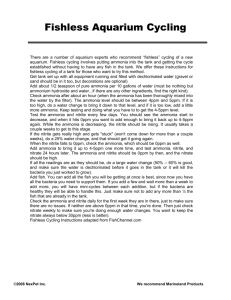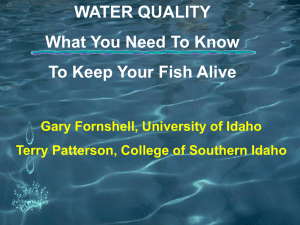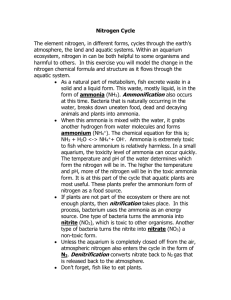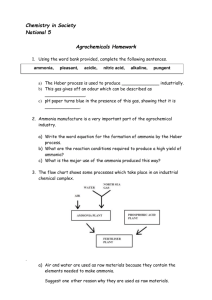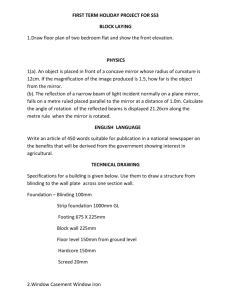Understanding and Maintaining Water Quality
advertisement
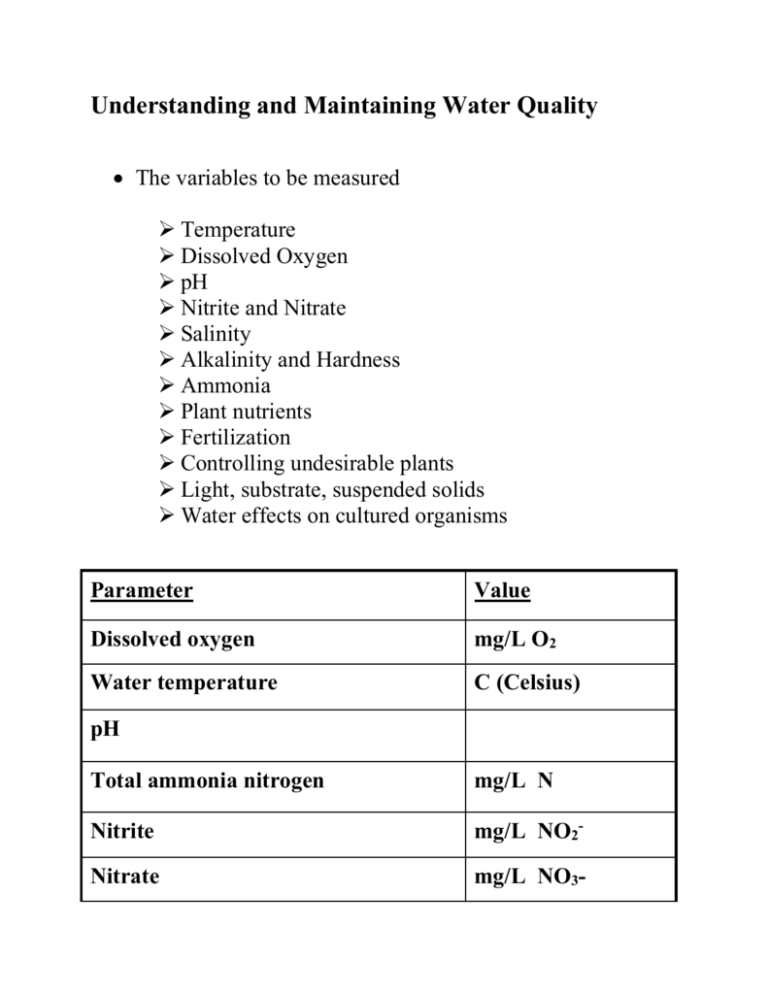
Understanding and Maintaining Water Quality The variables to be measured Temperature Dissolved Oxygen pH Nitrite and Nitrate Salinity Alkalinity and Hardness Ammonia Plant nutrients Fertilization Controlling undesirable plants Light, substrate, suspended solids Water effects on cultured organisms Parameter Value Dissolved oxygen mg/L O2 Water temperature C (Celsius) pH Total ammonia nitrogen mg/L N Nitrite mg/L NO2- Nitrate mg/L NO3- Alkalinity/Hardness mg/L CaCO3 Salinity g/L salt Temperature - Vary in water bodies - Vary in water sources - Very important in maintaining fish or other organism’s activity - Measured by various kinds of thermometers - Various ways in farm design Dissolved Oxygen - All cultured organisms are aerobic, i.e., they respire oxygen - Oxygen level in the various kind of water bodies vary - Oxygen level in various layers of the water body vary - Measured using various instruments, kits or chemical methods - Various ways to maintain it - dissolved oxygen and water temperature usually vary over a 24 hour cycle Stratification can cause dissolved oxygen and temperature to vary at different depths in the same system. pH - One of the very important factors - Hydrogen ion concentration - A near neutral pH is usually good for most of the organisms - Some species requires narrow range while other tolerate a wider range - Measured by portable or lab-scale pH meters, sometimes by strips - Maintained by various ways Ammonia -Total ammonia nitrogen is a measure of the ammonia (NH3) and ammonium levels (NH4+) in the water - The ratio of ammonia and ammonium varies in an equilibrium determined by pH and water temperature. 90 % 80 % NH3 as % of TAN 70 % at 20 C at3 0C 60 % 50 % 40 % 30 % 20 % 10 % 9.8 9.4 9 8.6 8.2 7.8 7.4 7 0% pH of water Ammonia as a % of total ammonia nitrogen Nitrite and Nitrate - Nitrites and nitrates are produced by an aerobic bacterial nitrification process of ammonia by Nitrosomonas and Nitrobacter respectively. - Nitrites are toxic to aquatic organisms, usually by being actively transported across the gills to bind with hemoglobin (making methemoglobin) which is incapable of transporting oxygen. - Nitrates are usually not toxic unless in very high concentrations. Alkalinity and Hardness - The form alkalinity takes is linked to pH of the system. - Alkalinity buffers against diurnal variations in pH. Salinity - Freshwater has a low ionic concentration (i.e. streams, rivers, ponds and lakes). - Saltwater has a high ionic concentration (ocean waters). - Brackishwater has an ionic concentration between freshwater and saltwater (mangroves). - NaCl concentration - Freshwater is less than 2 g/L - Brackish water is 2 g/L to 34 g/L - Sea water is more than 34 g/L Plant nutrients Fertilization Controlling undesirable plants Light, substrate, suspended solids Water effects on cultured organisms

